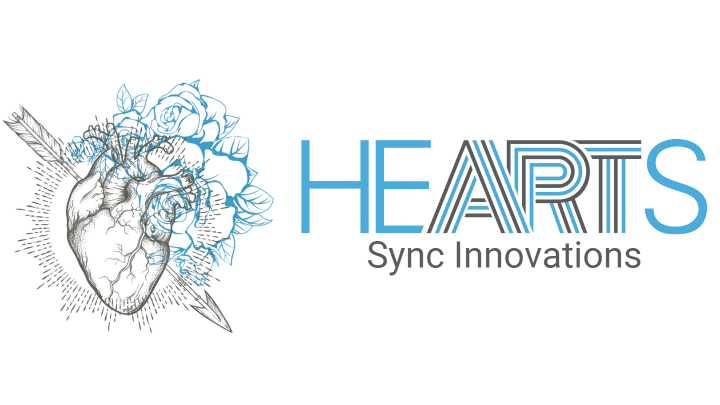Imagine 2035: Wearables read your hormone rhythm in real-time, AI adjusts nutrition, sleep, and training – and couples plan pregnancies as precisely as a spacecraft launch. This future begins today. For those who understand their menstrual cycle and manage it with a few targeted adjustments, not only does the chance of conception improve, but so does energy, mood, and performance in daily life. Cycle optimization is not a niche topic; it is a blueprint for the health of the next generation.
The menstrual cycle is a finely orchestrated hormone interaction between Follicular Phasephase from the start of menstruation to ovulation, dominated by estrogen which builds the uterine lining, Ovulationrelease of the egg from the ovary, and Luteal Phasephase after ovulation; progesterone stabilizes the lining for possible implantation. An important revelation: Ovulation does not always happen "on day 14." Large app data show that the follicular phase varies widely, while the luteal phase remains relatively stable [1]. For high performers, this means: Instead of rigid calendar calculations, individual data and adaptive routines are needed. Terms like Sporadic Anovulationindividual cycles without ovulation are more common than many think – and are often influenced by lifestyle. Nutrients like FolateB vitamin (folic acid as synthetic form), important for cell division and hormone balance and Omega-3 Fatty AcidsEPA/DHA from fish/algae; influence inflammation and cell membranes modulate hormonal signals. Similarly, the BMIBody Mass Index; rough marker for body fat and energy availability affects the neuroendocrine axis. The goal is not perfection, but to read cycles, identify the fertile phase more accurately, and increase the likelihood of conception with a few adjustments.
When the cycle is in sync, fecundity increases – the probability of becoming pregnant in a cycle. Tracking algorithms that evaluate basal temperature and bleeding can detect biphasic patterns and mark fertile days more reliably than pure calendar rules allow [2] [3]. Conversely, certain behaviors undermine fertility measurably: Heavy alcohol consumption during the ovulation and luteal phases, as well as moderate drinking in the luteal phase, reduces the odds of conception – presumably because the sensitive hormone sequence is disrupted [4]. Excessive caffeine is inconsistent in studies, but evidence suggests risks at high amounts and disturbances in early pregnancy phases; thus, moderation is wise [5] [6] [7]. On the resource side, nutrients act as "signalers": Higher intake of synthetic folates correlates with higher progesterone levels in the luteal phase and fewer anovulatory cycles [8]. Omega-3 fatty acids are associated in meta-analyses with higher fertilization and pregnancy rates – both spontaneous and in IVF/ICSI – although the heterogeneity is high [9]. Weight counts double: Obesity significantly worsens live birth rates and increases miscarriages in ART settings [10], while being underweight and restrictive eating favor amenorrhea and subfertile cycles [11] [12] [13].
Big data tracking is changing our understanding of the cycle. An analysis of over 2.7 million cycles from symptothermal apps shows: Only about a quarter of ovulations fall on days 14-15; short luteal phases (≤10 days) occurred more frequently than previously thought. Hidden Markov models allow for individualized estimates of ovulation – a paradigm shift away from average values towards personal cycle diagnostics [1]. Additionally, an evaluation of a fertility device that aggregates basal temperature and bleeding demonstrates that precision increases directly with measurement compliance: The more measurements taken, the fewer "undefined days" and clearer fertile windows – relevant for planning and stress reduction [2]. On the nutrition side, the BioCycle study provides a rare, detailed look: Repeated 24-hour recalls across cycles showed that higher synthetic folate intake is associated with higher luteal progesterone levels and a lower likelihood of sporadic anovulation – biologically plausible, as folate supports cell division and hormone production [8]. Lastly, a meta-analysis of clinical and natural conceptions summarizes that omega-3 can significantly improve fertilization and pregnancy rates; however, the high heterogeneity calls for realistic interpretation and individual application [9].
- Use a cycle tracking app and measure your basal temperature in the morning. Record bleeding, cervical mucus, and – if possible – use ovulation tests. More data means more precise fertile windows and less uncertainty [1] [2] [3].
- Integrate omega-3 intentionally: 2–3 servings of fatty fish per week (e.g., salmon, mackerel) or a daily standardized algae/fish oil with EPA/DHA. This supports fertilization and pregnancy rates, even with planned natural conception [9].
- Supplement with folic acid (typically 400–800 µg/day, individually clarifying with a doctor). Higher synthetic folate intake is associated with higher luteal progesterone levels and fewer anovulatory cycles [8].
- Optimize your body weight within the BMI range of 18.5–24.9 through moderate deficits for overweight or nutrient-dense increases for underweight. Prior to ART, weight reduction in obesity is associated with better live births and fewer miscarriages [10]. For restrictive eating patterns, prioritize sufficient energy, proteins, and micronutrients, possibly with professional guidance [11] [12].
The next wave of fertility medicine will be personalized: digital cycle profiles combined with precise nutrition and weight management. Large app cohorts, nutritional studies on folate, and meta-analyses on omega-3 point the way, but randomized, prospective studies with digital biomarkers will clarify how these levers can optimally interconnect. Until then: Track, nourish, balance – and thereby significantly increase your chances in every cycle.
This health article was created with AI support and is intended to help people access current scientific health knowledge. It contributes to the democratization of science – however, it does not replace professional medical advice and may present individual details in a simplified or slightly inaccurate manner due to AI-generated content. HEARTPORT and its affiliates assume no liability for the accuracy, completeness, or applicability of the information provided.













